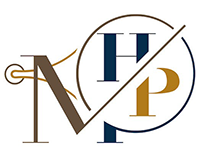MY SPEAKERS DOESN'T WORK ANYMORE. WHERE DOES THE BREAKDOWN COME FROM ?
At first, it will be necessary to know at what level of your chain is the problem.
But how to determine whether the problem is caused by an electronic element or by the speakers ? Which component is problematic ?
This diagnosis can be made in two steps: the understanding of the symptom (s) then performing a battery of tests.
In this section, after a few general reminders, will present a non-exhaustive list of the most common failures encountered during the use of your hi-fi system.

Electronics
The amplifier or source (CD player, tuner, streamer, etc ...) can be the source of severals defects (breath, lack of sound on one or more speakers, noise interference, etc.). This can come for example from a wrong setting, a bad connection or an electronic failure.
An elimination test can often be sufficient to detect the material responsible for the famous defect. It will then be necessary to check the connections and settings or potentially use a specialized repairer.
Of course, if the problem is too much serious and dangerous, we invite you not to push too far these tests.
He is at note that the electronics will only very rarely be responsible for the failure if one of the speakers the defective speaker still works properly
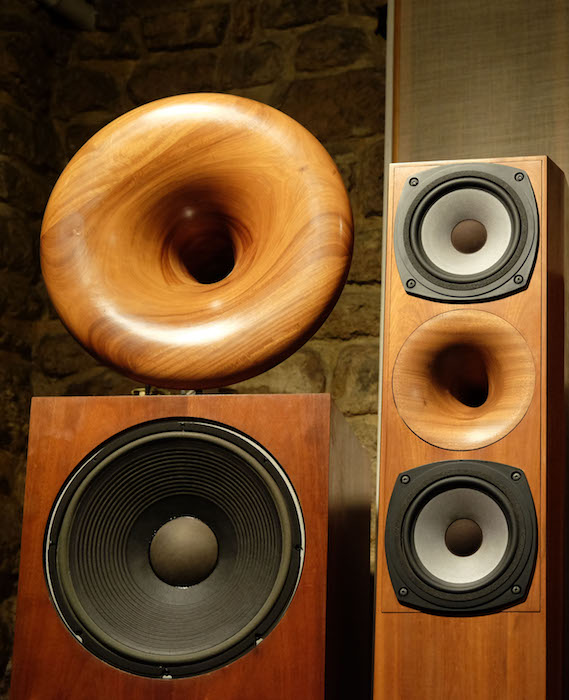
THE SPEAKERS
There are two types of speakers: so-called passive speakers and those called active.
A passive speaker consists of an electronic filter and one or more speakers.
It receives a signal already amplified. Its filter acts as an adapter or a signal splitter according to the frequencies. It consists of electronic components (which are mainly capacitors, coils and resistors).
A speaker active is connected to the mains as it directly integrates its amplifier.
It will then determine whether the failure is due to amplification - which we are not repairing - or to the part speaker / passive crossover
It should be noted that an intermittent fault is rarely due to passive speakers.
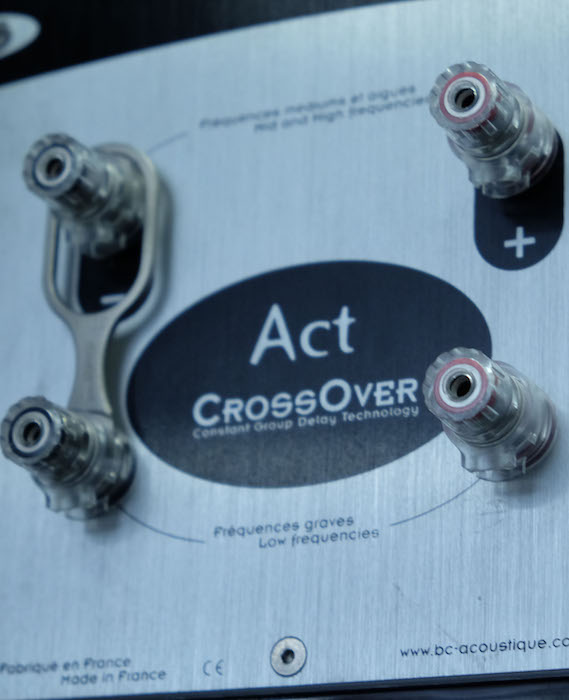
ABSENCE OF ALL OR PART OF THE SOUND REPRODUCTION
At least one of my speakers works correctly:
Here my speaker may have lost his treble - the sound is dull, unclear - or its bass - the sound is strident, without impact or trunk - which alters directly the balance of the sound reproduction.
In this case, it should be noted that we have a coherent sound signal on at least one of my speakers. The problem certainly comes from the speaker (in the case of an electronic problem, no sound comes out of the speaker or is defective across the spectrum).
None of my speakers do not work:
My speaker just does not ring anymore. In this case, either my speaker receives a signal and does nothing, or there is no signal. He will be necessary to carry out tests to know if the problem comes from the electronics or the speakers concerned (filter problem or failure of all speakers in the loudspeaker).

INTERFERENCE OR NOISE
Unlike the previous section, the sound reproduction is complete here but presents defaults..
The problem is audible even without my source is not started or when the volume of my (pre) amplifier is at least::
My electronics is then to question: it sends a signal to the speakers then that she should not. This can come from the source (tuner, streamer, turntable etc.) or of the amplifier (power supply noise or blast, attention, any amp produced so-called a background noise, you only need to worry when it impacts listening)
The problem is audible when using the system:
Several types of noise can deteriorate the listening quality a HiFi system. We will come back in detail about those related a speaker in the rubric "Internal Diagnosis of the speakers" below - because the "Test to Achieve" section has allowed you to check if the fault is produced by your electronics. In the latter case, it will be necessary contact an electronics repairer or simply review your connections
Switching on or off voltage of a device creates an impact:
Slaps can occur. These noise can be impressive depending on the amount of power delivered and the sensitivity of your speakers. This problem is punctual and should not be detrimental to the system but it is better to revise your amp if the amplitude of these sounds seems disproportionate.
It should be noted that it is always advisable to turn on your system starting with the sources (amplifier last) and turn it off against the current (amplifier first).
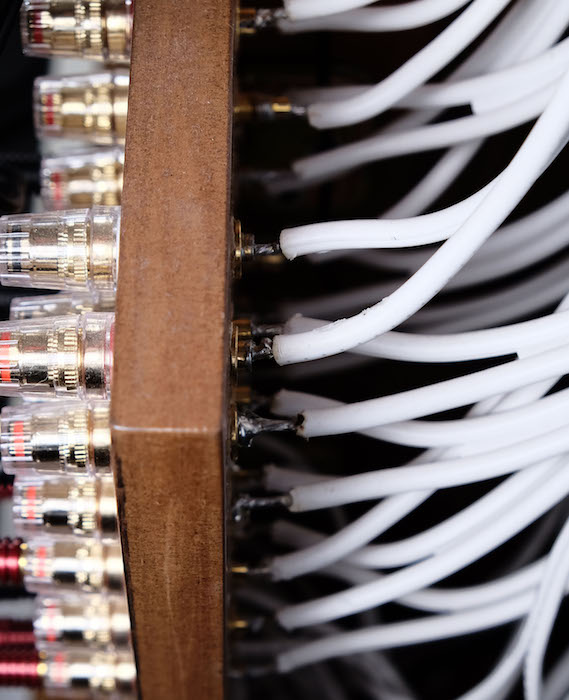
TEST TO DO
If the study of the symptom is not sufficient to determine the origin of the problem, some tests may help you isolate the element responsible for the failure of your system. The simplest is operate by elimination:
- My right speaker does not play? I then reverse my two speakers behind my amp. Yes she still does not work, she is responsible for the breakdown. On the other hand, if breakdown changes side, so the problem is located upstream ie at the level of the amplifier or one of the electronic devices processing the signal before (pre-amp, player CD, DAC, etc ...). We then perform the same operation on the connection of the device previous, to isolate the responsible element.
- It's not enough ? Here is a list of actionable actions to isolate the problem:
change source, change amplifier, change amplification channel (whether input or output), connect another pair of speakers, interchange the cable, etc.
Indeed, in some cases, you need a little bit of equipment to perform these tests and this is not always possible. But this will potentially save you trips.
So you have a priori been able to isolate the defective link or at least isolate some links out of suspicion.
If the speakers work properly, we do not can repair your breakdown but only offer new products (link to electronic). You will still find in the partner section repairer contacts specialized electronics (link to partner).
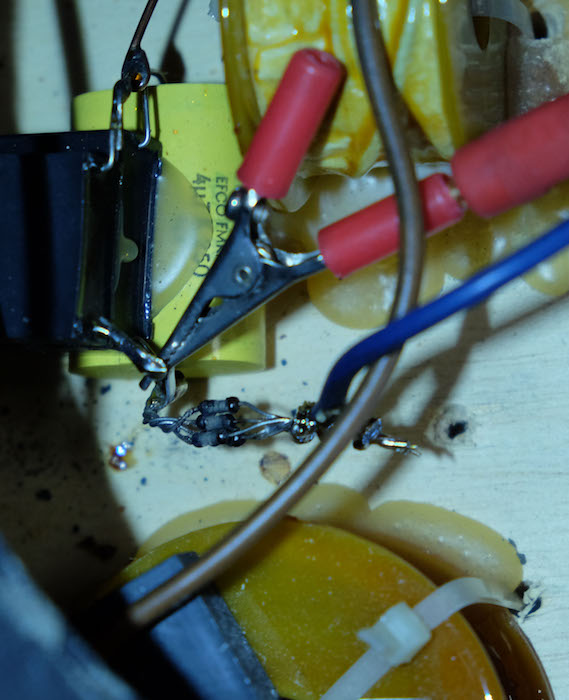
INTERNAL DIAGNOSIS OF THE SPEAKERS
Once you have identified that the problem was coming from the speakers, it is still possible for you to go further in the diagnosis. If you have any doubt, please know that our quote is free except in rare exceptions.
A defective speaker may have a number of defects:
- mechanical friction noises (often occurring on low and rhythmic frequencies on music) resulting from an off-center coil problem on one or more speakers.
- sucking noises, even clicks are the consequence of a loss of tightness of my speakers (degraded suspension, loose core cache, etc.).
- dissonances can be caused when a speaker creates distortion. Either he is damaged in one way or another, or it plays on an inappropriate frequency range
In general, simply remove the problem speakers and replace them with another one. loudspeaker - potentially coming from the other speaker - to determine whether it is a problem of filter or speaker. Be careful not to pick up a fragile speaker when these tests on pain of damaging it.
If the replaced speaker also remains silent, the failure comes from the filter. Conversely, if he begins to sing is that the old speaker is defective
Note that the House of the Speaker can help you in this diagnosis at any time, but not will repair only passive filters and speakers. So, if you encounter a problem electronics, you can contact one of the electronic repairers we advise in our partners section.

